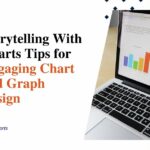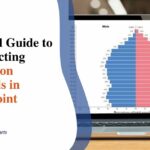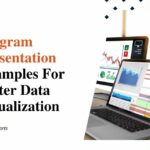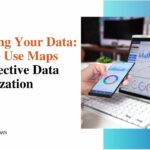The Best Practices of ‘User Research Data Visualization’: Testing Visuals Before Release
Data visualization is basically the science and art of presenting data clearly, meaningfully, and engagingly. However, the big question here is, how do you know if data visualization is effective for your audience? How do you figure out their goals and difficulties? The answer pretty much lies in ‘user research data visualization.’
User research is more of a procedure of collecting and analyzing information about the users, their requirements, and their challenges. It can assist you in creating data visualizations that are useful and relevant. This blog will give you a greater insight into the ‘data visualization user testing.’
Some best practices of data visualization before release
Data visualization is something that can be utilized for a wide array of purposes. It is extremely vital to note that it is not only reserved for use by the data teams. Management is something that also leverages it to convey the structure of an organization and the hierarchy, while the data analysts and the data scientists utilize it to discover and explain trends and patterns.
Let us take you through some of the best practices of data visualization before release:
- Keeping it simple
Data visualization is basically all about communicating the data insights in an accurate and simple manner. When you are developing the visuals, less is always more. Data overload is something that can quickly lead to confusion. Therefore, it is vital to include only the most vital information.
- Say NO to distracting elements
It is extremely crucial to steer clear from any additional elements which might be acting as distractions. It may carry on things like additional use of colors, background patterns that are busy, or cluttered layouts.
- Intuitive visual cues

It is something that needs to be acknowledged when the discussion is about improving data visualizations with user input. The finest data visualizations utilize visual cues that are genuinely intuitive to the viewers. For instance, using different colors to represent different data points might help the viewer to better understand the relationship between those points.
- Telling a story
You may definitely think of data visualization as an opportunity to tell a story with data. A visualization that is effective will precisely communicate the insights that are valuable. And these insights are gained from the data in a manner that is right and easily understandable.
An effective data visualization makes use of data hierarchy. It does it to direct the attention of the viewers to the most vital information. It can easily be accomplished through the use of things such as size, position, and color.
- Testing
Before the data visualization is finalized, testing it with actual users is something that is a must! It will help make sure that the visualization speaks a story effectively. You can make changes to any user-centered data visualization design if needed.
- Continuous improvement
Even the experts in the field believe that data visualization is an iterative process. It is crucial to seek improvement. As new data is available or new insights are received, update the visualization accordingly.
Wrapping Up
The user research data is indeed valuable for acknowledging and enhancing the user experience. Data visualization is very important for presenting insights correctly. However, it is never easy to go ahead and create an effective visualization. But, with the practices we mentioned above, you can expect to perfect it quickly. Check out this site for more information!
FAQs
1. What are the factors to consider when choosing the format for data visualization?
Based on your procedures and research goals, you may have distinct kinds of data to visualize, such as qualitative, quantitative, and mixed.
2. Why do user research matters?
User research is important not only for the sake of designing services and products but also for creating data visualizations. Data visualizations are basically static charts or images. They can be dynamic and interactive tools that can communicate complex information.
3. How important is data visualization?
The importance of data visualization is simple. It assists people in seeing, understanding, and interacting with data. Whether complex or simple, the right visualization may bring everyone on the same page irrespective of their level of expertise.
4. What are the notable benefits of data visualization?
We may use visualization to translate complex information, better analyze concepts, and many other things that can simplify multiple aspects.
5. What are the two basic types of data visualization?
Generally, there are two basic kinds of data visualization. One is known as static data visualization, and the other is known as interactive data visualization.







